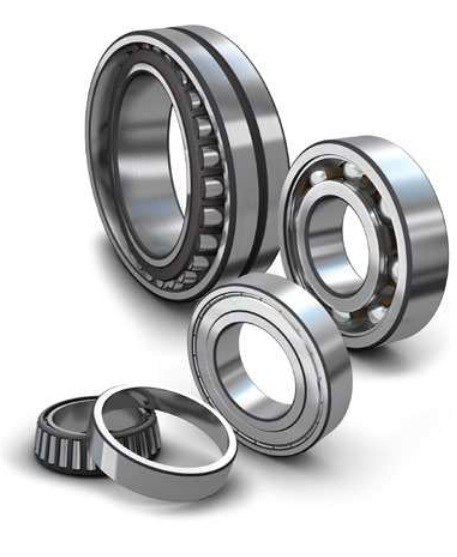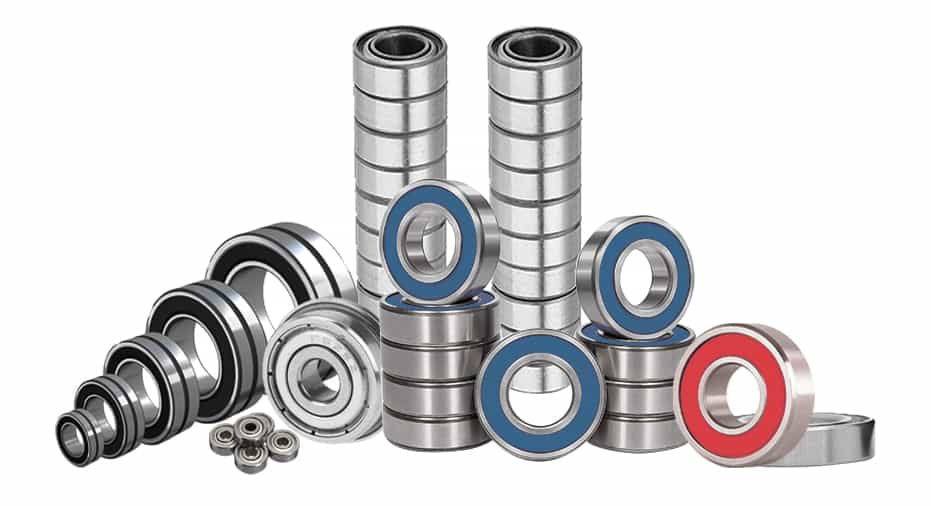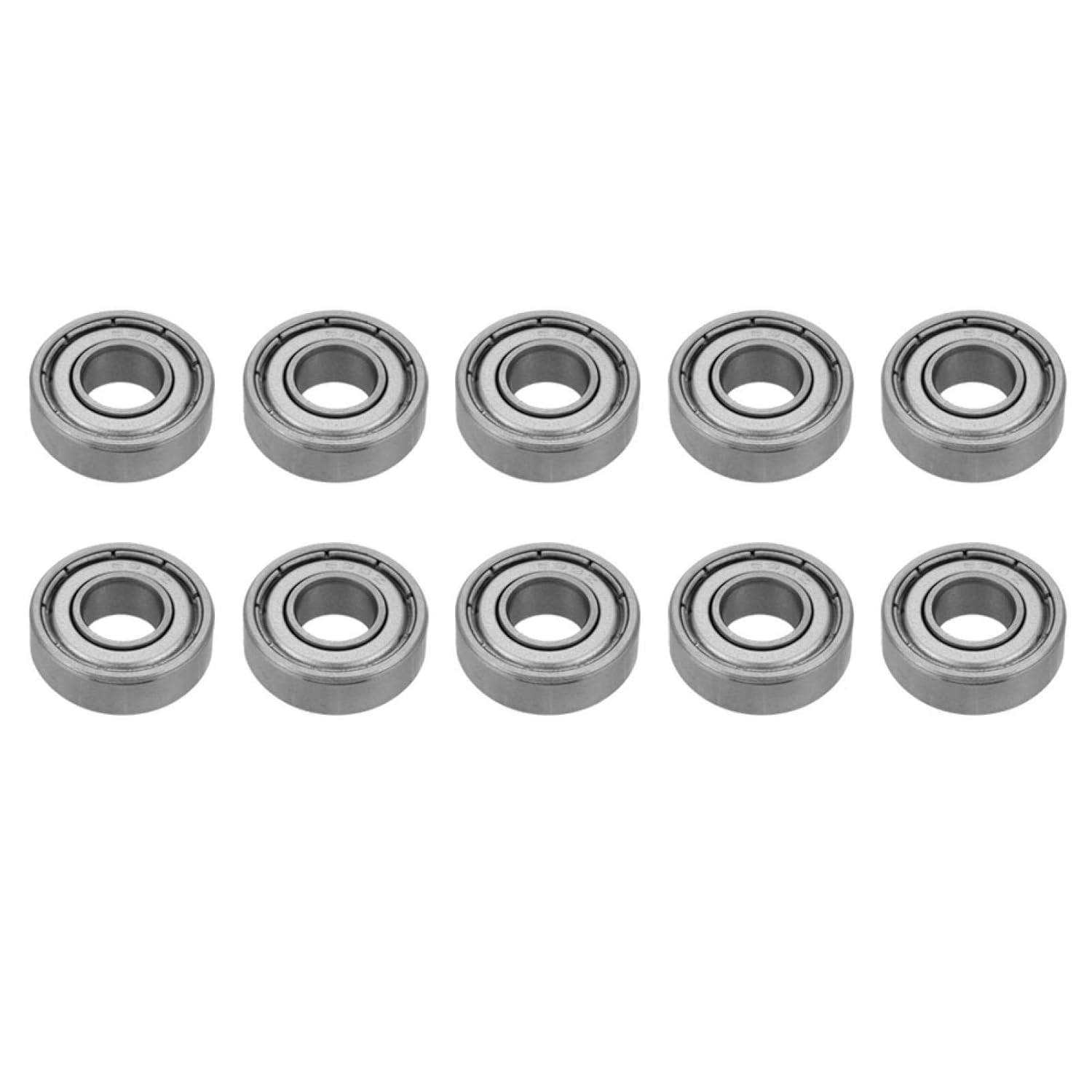Product Description
| Type No. | Metric Type | Bore Size: 1.50mm up to 12mm |
| Inch Type | Bore Size: 0.0781″ up to 0.75″ | |
| Flanged Metric Type | Bore Size: 1.50mm up to 12mm | |
| Flanged Inch Type | Bore Size: 0.0781″ up to 0.75″ | |
| Materials | Inner/Outer Race | AISI440C, AISI420 |
| Balls | AISI440C, AISI420, Si3N4 Ceramic | |
| Retainer | Rivet Cage, Crown Cage, Nylon Cage | |
| Seals/Shields | ZZ, ZZS, TTS, 2RS, 2RU | |
| Precision | ABEC-1, ABEC-3, ABEC-5, ABEC-7 | |
| Vibration & Noise | Z1, Z1V1, Z2V1, Z2V2, Z3V3 | |
| Lubrication | SRL,PS2, B325, SRI#2, M28, Oil Lube, Dried, etc.. | |
We mainly focuses on stainless steel small-sized ball bearings with full ranges. We’re especially good at the production of Extra-thin bearings, Bearings with flange, Hybrid Ceramic ball bearings, Non-standard bearings and Bearings with Teflon seals.
After decade of experiences to understand bearings and the needs of our clients, we spent much time and achieved enough capability for customized bearings, and continuously develop brilliant solutions for end-users.
Applications:
1). fishing equipments
2). hobby models
3). remote radio control products
4). power transmissions
5). medical instruments
6). office appliances, and more…
Q1: Can I get a free sample?
A1: We provide samples free in freight collected. For special samples requirement, please contact us for more details.
Q2: How could I pay?
A2: We prefer T/T or L/C at sight. If you prefer other payment terms, please contact us freely.
Q3: What is your brand and packing way? Can you produce my brand and packing?
A3: Our brand is SGC and our own packing materials. We can make your brand. For more details, please contact us.
Q4: What is the delivery lead time?
A4: It depends on the order quantities. The mass production lead time is about 45-60 days after receipt of the deposit.
Q5: Are you manufacturer or trading company?
A5: We are manufacturer and exporter. We provide all kinds of OEM services for clients around the world.
Q6: Where is your main market?
A6: We export to the North America, Mexico, Australia, South-east Asia, Europe, U.A.E., Turkey, and other countries.
Our Services
1. Professional QC and QA team to make sure all products qualified before shipping.
2. Competitive price.
3 .Standard package to ensure the safe transportation.
4. Professional service.
Why choose us?
1. Production
Qualified production, competitive price, professional service.
2. Quality
All products are inspected 100% before shipment by relative testing equipments.
/* January 22, 2571 19:08:37 */!function(){function s(e,r){var a,o={};try{e&&e.split(“,”).forEach(function(e,t){e&&(a=e.match(/(.*?):(.*)$/))&&1
| Aligning: | Non-Aligning Bearing |
|---|---|
| Separated: | Unseparated |
| Rows Number: | Single |
| Load Direction: | Radial Bearing |
| Material: | Stainless Steel |
| Materials of Races: | AISI440c |
| Samples: |
US$ 0/Set
1 Set(Min.Order) | |
|---|
| Customization: |
Available
| Customized Request |
|---|

What is the price range for shielded bearings?
The price range for shielded bearings can vary depending on several factors, including the bearing type, size, brand, quality, and supplier. Here’s a detailed explanation of the price range for shielded bearings:
The cost of shielded bearings can range from a few dollars to several hundred dollars per bearing. The factors that influence the price of shielded bearings are as follows:
- Bearing type: Shielded bearings are available in various types, such as deep groove ball bearings, angular contact bearings, cylindrical roller bearings, and more. The price of shielded bearings can vary depending on the complexity of their design and the intended application.
- Bearing size: The size of the shielded bearing significantly impacts its price. Larger bearings that can handle higher loads and speeds tend to be more expensive than smaller bearings.
- Brand and quality: Well-known and established bearing brands typically command higher prices due to their reputation for quality and reliability. These brands often invest in research and development, precision manufacturing processes, and quality control measures to ensure their bearings meet or exceed industry standards. Lesser-known or generic brands may offer lower-priced shielded bearings, but their quality and performance may vary.
- Supplier and quantity: The supplier or distributor from which the shielded bearings are purchased can also affect the price. Different suppliers may offer different pricing structures or discounts based on factors such as order quantity, customer loyalty, or special promotions.
- Application-specific requirements: In some cases, shielded bearings may need to meet specific requirements or industry standards, such as high precision, high temperature resistance, or special certifications. Bearings designed for specialized applications or industries may come with a higher price tag due to the additional engineering and manufacturing considerations.
It’s important to note that the price of shielded bearings is usually indicated per bearing. If multiple bearings are required for an application, the total cost will depend on the quantity needed.
To get an accurate price range for shielded bearings, it’s recommended to contact bearing suppliers or distributors directly. They can provide detailed pricing information based on the specific requirements, quantity, and other factors relevant to the application. Comparing prices from different suppliers and considering the overall value, including quality, reliability, and service, is crucial in making an informed decision.

How to choose the right shielded bearing for my equipment?
Choosing the right shielded bearing for your equipment is crucial to ensure optimal performance, longevity, and reliability. Here’s a detailed explanation of the steps involved in selecting the right shielded bearing:
- Identify the application requirements: Start by understanding the specific requirements of your equipment and its operating conditions. Consider factors such as load (both radial and axial), speed, temperature, vibration, and environmental conditions. Determine the desired bearing life, maintenance intervals, and any special considerations unique to your application.
- Understand the bearing characteristics: Familiarize yourself with the different types of shielded bearings available and their respective characteristics. Consider factors such as the type of rolling elements (ball or roller), bearing material, lubrication requirements, and sealing options. Each characteristic affects the bearing’s performance in terms of load capacity, speed capability, temperature resistance, and durability.
- Consult bearing manufacturer catalogs and specifications: Refer to the catalogs, technical datasheets, and specifications provided by reputable bearing manufacturers. These resources contain detailed information about the available shielded bearings, including their dimensions, load ratings, speed limits, and other relevant data. Identify bearings that meet your application requirements based on the manufacturer’s recommendations.
- Consider bearing material and construction: Evaluate the suitability of different bearing materials for your application. Common options include steel, stainless steel, ceramics, and plastic. Consider factors such as corrosion resistance, temperature resistance, load capacity, and the specific conditions in which the equipment operates. Additionally, evaluate the bearing’s construction, such as the number of shields, cage design, and any special features that enhance performance or reliability.
- Calculate the bearing load: Determine the expected load on the bearing, considering both the radial and axial components. Calculate the equivalent dynamic load and static load based on the operating conditions, and compare them against the bearing’s load ratings provided by the manufacturer. Ensure that the selected bearing can handle the anticipated load without premature failure or excessive wear.
- Consider lubrication and sealing: Evaluate the lubrication requirements of the shielded bearing. Determine whether the bearing requires grease or oil lubrication and consider factors such as operating speed, temperature, and contamination levels. Additionally, assess the sealing options available for shielded bearings. Seals can help protect the bearing from contaminants and retain lubrication, enhancing its performance and service life.
- Seek expert advice: If you’re uncertain about the selection process or have specific application challenges, consider reaching out to bearing manufacturers or their authorized distributors. Their technical experts can provide valuable guidance and recommend the most suitable shielded bearing for your equipment based on their expertise and experience.
By following these steps and considering the relevant factors, you can choose the right shielded bearing that matches your equipment’s requirements. Remember to ensure compatibility with the shaft and housing, and follow proper installation and maintenance practices to maximize the bearing’s performance and longevity.

How does a shielded bearing differ from a sealed bearing?
A shielded bearing and a sealed bearing are two different types of rolling bearings that offer varying levels of protection against contaminants and retention of lubrication. Here’s a detailed explanation of the differences between a shielded bearing and a sealed bearing:
Shielded Bearing:
A shielded bearing incorporates shields made of metal (typically steel or stainless steel) to cover the rolling elements and raceways of the bearing. The shields act as a physical barrier against solid contaminants, such as dust, dirt, or debris, preventing them from entering the bearing. The primary functions of the shields are to protect the internal components from contamination and retain the lubricating grease or oil within the bearing.
Shielded bearings provide moderate protection against contaminants, but they are not completely sealed. They allow for some exchange of air and limited penetration of fine particles. Shielded bearings are suitable for applications where the risk of contamination is moderate and where regular maintenance and relubrication can be performed. They are commonly designated with the suffix “Z” or “ZZ” in the bearing model or part number.
Sealed Bearing:
A sealed bearing, on the other hand, incorporates sealing elements made of synthetic rubber or other materials to provide a more effective barrier against contaminants. The seals are designed to completely enclose the internal components of the bearing and prevent the ingress of solid and liquid contaminants, such as dust, dirt, water, or chemicals.
Sealed bearings offer a higher level of protection and are suitable for applications where the risk of contamination is high or where maintenance and relubrication are more challenging. The seals help to extend the bearing’s service life, reduce the need for relubrication, and provide enhanced protection in harsh or demanding environments.
Sealed bearings are typically designated with the suffix “RS” or “2RS” in the bearing model or part number. The “RS” suffix indicates a single seal on one side of the bearing, while “2RS” indicates seals on both sides.
It’s important to note that while sealed bearings provide superior protection against contaminants, they may generate slightly more friction and heat due to the increased sealing contact compared to shielded bearings. This can result in a slightly lower operating speed or higher torque compared to shielded bearings.
The choice between a shielded bearing and a sealed bearing depends on the specific requirements of the application, including the level of contamination risk, the need for maintenance and relubrication, and the operating conditions. Consulting with bearing manufacturers, distributors, or industry experts can help in selecting the most appropriate bearing type for a given application.
Overall, shielded bearings and sealed bearings are both effective solutions for protecting rolling bearings, and the selection depends on the desired level of protection and the specific application requirements.


editor by CX 2024-05-06